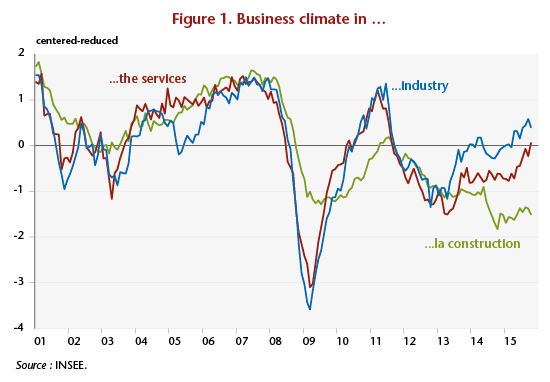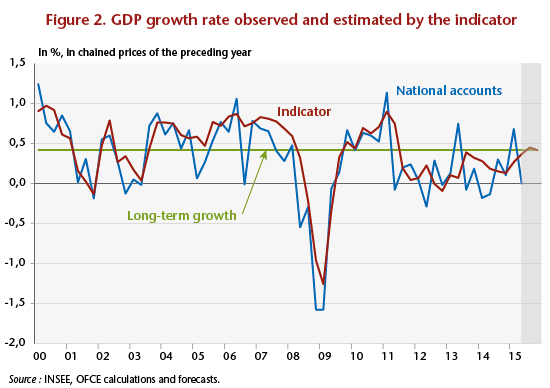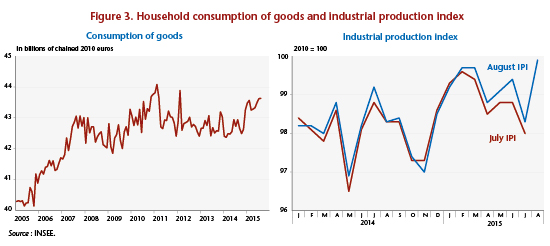Measuring well-being and sustainability: A special issue of the Revue de l’OFCE
By Eloi Laurent
This issue of the Revue de l’OFCE (no. 145, February 2016) presents some of the best works that are being produced at a rapid clip on indicators of well-being and sustainability.
Why want to measure well-being? Because the idea that economic growth represents human development, in the sense that growth represents a good summary of its various dimensions, is simply false. GDP growth is not a prerequisite for human development; on the contrary, it is now often an impediment (as is illustrated by the exorbitant health costs of air pollution in India and China, two countries that concentrate one-third of the human population).
Achieving growth is not therefore sufficient in itself for human development; there is a need for specific policies that deal directly with education, health, environmental conditions and democratic quality. If the multiple dimensions of well-being are not taken into account, one dimension, typically the economic dimension, is imposed on and crushes the others, mutilating the human development of both individuals and groups (the example of health in the United States is particularly striking in this regard).
Why want to measure sustainability? Because today’s global growth rate of 5% is of little importance if the climate, the ecosystems, the water and air that underpin our well-being have irrevocably deteriorated in two or three decades due to the means deployed to achieve that growth. Or to put it in the words of the Chinese Minister of the Environment, Zhou Shengxian, in 2011: “If our land is ravaged and our health destroyed, what benefit does our growth bring?” We need to update our understanding of well-being so that it is not a mirage. Our economic and political systems exist only because they are underpinned by a set of resources that make up the biosphere, whose vitality is the condition for the perpetuation of these systems. To put it bluntly, if ecological crises are not measured and controlled, they will eventually do away with human welfare.
Indicators of well-being and sustainability must therefore enter a new, performative age: after measuring in order to understand, we now need to measure in order to make change – to evaluate in order to evolve. Because the change called for by these new visions of the global economy is considerable. This time of action invariably involves choices and trade-offs that are far from simple. This underscores the dual purpose of this issue of the Revue de l’OFCE: to show that indicators of well-being and sustainability have reached maturity and that they now can change not only our vision of the economic world but also the economic world itself; they can make clear the types of choices available to public and private decision-makers so as to carry out the change needed. In this respect the two sections of this special issue clearly highlight the issue of the relevant scale for measuring well-being and sustainability.
The first part of this issue is devoted to the relatively new topic of measuring regional well-being in France. Measuring well-being where it is actually lived presupposes moving down the scale to the local level: the need to measure and improve human well-being as close as possible to people’s lived reality, along with the scale of spatial inequalities in contemporary France, demands a territorial perspective. There are at least two good reasons why territories (regions, cities, départements, towns), more than nation-states, are the vectors of choice for the transition towards well-being and sustainability. The first is that they have grown in importance due to the impact of globalization and urbanization. The second is their capacity for social innovation. Following on from the late Elinor Ostrom, we talk about a “polycentric transition” to mean that each level of government can seize on the well-being and sustainability transition without waiting for a push from the top.
Monica Brezzi Luiz de Mello and Eloi Laurent (“Beyond GDP, beneath GDP: Measuring regional well-being in the OECD” – all OFCE Revue articles in French) gives the initial results of the theoretical and empirical work currently underway in the OECD framework (interactive access on the site http://www.oecdregionalwellbeing.org/) that measures certain dimensions of well-being at the regional level and applies these new indicators to the French case in order to draw useful lessons for public policy.
Robert Reynard (“Quality of life in the French regions”) provides an overview of recent findings by the INSEE using regional quality-of-life indicators. These can be used to develop a new typology of French spaces, highlighting eight major types of territories, which are distinguished both by the living conditions of their inhabitants (employment, income, health, education, etc.) and the amenities that these areas provide for their people (living environment, access to services, transport, etc.). The new representation of France that emerges constitutes a valuable decision-making tool for those in charge of policies aimed at promoting equality between the regions.
Kim Antunez, Louise Haran and Vivien Roussez (“Diagnoses of quality of life: Taking into account people’s preferences”) looks back at the approach developed by France’s regional monitoring body (Observatoire des territoires) and highlights indicators, offered at appropriate geographical scales, that can be used to account for the multidimensional character of quality of life in France. Here too, regional typologies explore the link between the diverse amenities in people’s environments and the diverse aspirations of the people who live in them, so as to highlight the imbalances that exist and the public policy levers that can be used to reduce these.
Finally, Florence Jany-Catrice (“Measuring regional well-being: Working on or with the regions?”) discusses a fundamental aspect of the debate about measuring well-being in the French regions: the participation of citizens in defining their own well-being. She shows in particular that the impact of the indicators depends on whether those who develop them work on the regions or with them – it is only in the latter case that the region and its inhabitants become active players in the development of a common vision.
But, in contrast to these localized approaches, the measurement of sustainability requires moving up the geographical scale to the national or even global level. This is the subject of the articles in the second part of this issue, which deal with a subject whose importance has been emphasized by the recent law on the energy transition: the circular economy. Here there is a crucial difference to be made between a seemingly circular economy, which concerns a product or business, and genuine economic circularity, which can be understood only by enlarging the loop to develop a systemic vision.
This is what Christian Arnsperger and Dominique Bourg aim to demonstrate (“Towards a truly circular economy: Reflections on the foundations of an indicator of circularity”) by examining the main issues and questions that designers of an indicator of a truly circular economy would need to take into account, if it were ever to be developed formally and technically. They conclude in particular that without a systemic vision oriented towards the reduction, rationing and stationarity intrinsic to the permaculture approach, the notion of the circular economy will forever remain vulnerable to misuse that, however well intentioned, is ultimately short-sighted.
Vincent Aurez and Laurent Georgeault (“Indicators of the circular economy in China”) attempt to assess the relevance and the actual scope of the assessment tools developed in recent years by China to flesh out an integrated circular economy policy that aims at ensuring the transition to a low-carbon model with a restrained use of resources. These instruments, which in many respects are unique, but still inadequate, are distinguished by their systemic and multidimensional character, and therefore constitute an original contribution to the field of sustainability indicators.
Finally, Stephan Kampelmann (“Measuring the circular economy at the regional level: A systemic analysis of the management of organic matter in Brussels”) draws on the theory of social-ecological systems to carry out a particularly innovative exercise. He uses a battery of indicators to compare the economic, social and environmental impact of two possible pathways for the municipal management of flows of organic matter in Brussels: a centralized treatment using anaerobic digestion, and a process based on decentralized composting.
Thus while well-being is best measured at the local level, to assess sustainability properly, including at the regional level, the impact felt beyond local and national borders has to be taken into account. The trade-offs between these dimensions, including the exploration and possible transformation into synergies at regional and national levels, then turn out to be the most promising projects opened up by the welfare and sustainability transition.


